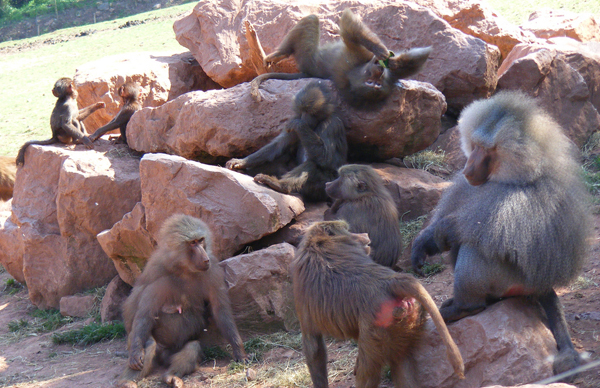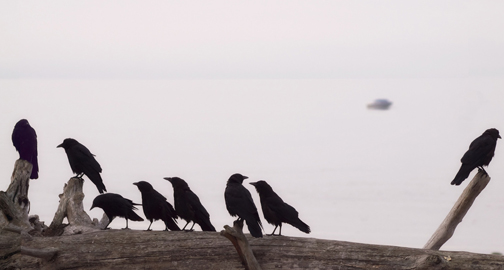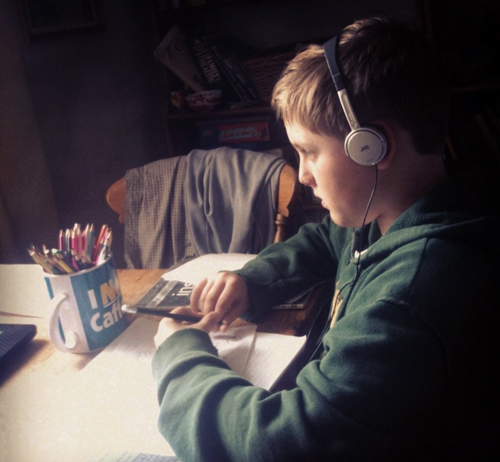
Baboons are more like humans than we may like to think. They are as nasty to each other as we are. Photo by Marie Hale.
Victoria Times Colonist, November 2, 2012—Within less than 24 hours on October 9–10, 2012, two 15-year-old girls made newspaper headlines.
Amanda Todd and Malala Yousafzai lived worlds apart, separated by language, history, culture, and geography. Their stories, however, share tragic similarities.
Todd, as we know, committed suicide after being bullied online and at school. Yousafzai was shot in the head and neck by Taliban terrorists, which in my opinion, are nothing more than organized bullies with guns and grenades.
Todd and Yousafzai were targeted for abuse because—according to the narrow strictures of each group of bullies’ codes of conduct—these two young women had crossed moral lines—lines defined and marked and defended by the bullies themselves.
Todd and Yousafzai were targeted because they were women. Todd was fighting to move beyond a painful series of incidents that had started when she was sexually exploited by a cyber-stalker/blackmailer. Yousafzai spoke out for the rights of girls and women to attend school in a country where they had, very recently, been forbidden education.
I’m not saying bullies pick only on girls. Of course not. Bullies single out anyone whom they can get away with picking on. Some choose weaker and more vulnerable targets. Like Amanda, who lacked a supportive peer network that could help her and intervene on her behalf. Like Reena Virk, Dawn-Marie Wesley, Hamed Nastoh, Ashkan Sultani and all other teens—female or male—who have been bullied to death in B.C.
Bullies also prey on those who are strong or successful in some way because of the threat this poses to the bullies’ positions, worldviews or self esteem. Yousefzai, in advocating for women’s education and in blogging about her life under the Taliban for the BBC, fits this category.
We know bullying isn’t unique to humans. Stanford University neuroscientist and stress researcher Robert Sapolsky details his work studying baboons in Kenya’s Serengeti in many of his books. In A Primate’s Memoir, he writes, “Baboons live in big, complex social groups, and the population I went to study lived like kings…. The baboons work maybe four hours a day to feed themselves; hardly anyone is likely to eat them. Basically, baboons have about a half dozen solid hours of sunlight a day to devote to being rotten to each other. Just like our society….”
Typical baboon bullying goes something like this: A troop’s alpha male appropriates a subordinate’s hard-earned lunch of tubers. The subordinate, smarting, slashes the next guy down the pecking order, who bites a female, who smacks a juvenile, who thumps the newest kid on the block….
All within seconds.
Disturbingly like some families, schoolyards and online chatrooms.
And so the hurt in Sapolsky’s baboon troops cascades down and around. Then, one year in the 1980s, animals from one troop feasted on meat they found in the garbage dump behind a nearby tourist lodge. Many of the troop partook of the feast; the most aggressive partook the most.
Alas, the meat was diseased. Many in the troop perished, including all the aggressive males.
Females suddenly outnumbered guys. The males that survived were more interested in grooming and being groomed—in connecting socially with members of the troop—than in terrorizing others. And when aggressive adolescent males wandered in off the savannah to become troop members, they were quickly made to leave bullying behaviors at the door.
A kinder, gentler baboon society was born. According to Sapolsky, that society continues to thrive today, some 25 years later.
Sapolsky’s tale provides hope for us so-called higher primates. Of course, we humans are not permitted to feed tainted meat to or otherwise dispatch bullies, sociopaths, anti-social jerks and others who make our lives miserable. But those in charge and those below and those around and those online can connect and support and stand up for each other. We can each refuse to tolerate language and actions meant to hurt or intimidate, whether directed at us or at others. We can each intervene when hurt happens. We can each say, “No. Not on my watch.”
After all, if baboons can do it, surely we can, too.
Can’t we?
—30—
A version of this article appears in the Victoria Times Colonist



